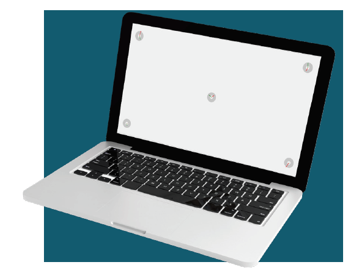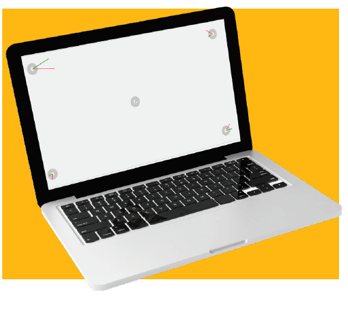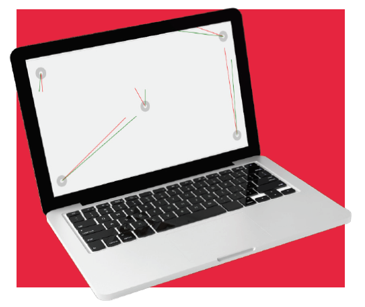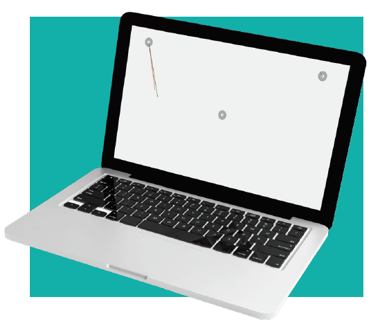Å få et godt resultat fra kalibreringen kan noen ganger være vanskelig av forskjellige årsaker. Her lister vi opp eksempler på når kalibrering kan være vanskelig, og hvordan du kan løse dette,
Situasjoner når resultatet av kalibreringen er dårlig eller ufullstendig
- Eleven bruker briller med tykke innfatninger og brilleglass. Hvis dette er tilfelle, be eleven om å holde hodet stille under kalibreringen slik at brillene ikke forstyrrer signalet. Vennligst sørg for at brilleglassene er rene.
- Kraftige lyskilder eller sterkt sollys kan forhindre øyesporeren fra å oppdage øynene skikkelig. Flytt utstyret til et mørkere rom, flytt deg bort fra vinduer eller trekk for noen gardiner som kan forårsake problemet.
- Eleven har problemer med å fokusere på den bevegende sirkelen. Oppmuntre elevene når de prøver å følge den bevegende sirkelen rundt på skjermen med øynene. De må alltid holde fokus på sirkelen selv om de vet hvor den skal, og de må fortsette å se på sirkelen når den stopper i hvert hjørne.
- Eleven kan ha en synshemming, eller de kan ha utfordringer med å holde fokus.
- Noen ganger, av ukjente årsaker, kan det være vanskelig å oppnå en god kalibrering, og det kan være problematisk til tross for flere forsøk. Hvis dette er tilfelle, må dårlig kalibrering aksepteres. Fortsett testen og legg til en kommentar på slutten. Det er fortsatt mulig å få et resultat til tross for dårlig eller ufullstendig kalibrering. Prøv maksimalt tre ganger før du fortsetter med testen.
Eksempler på kalibreringsresultater med ulik kvalitet:
Optimal
To linjer inni alle sirkler

Middels
Linjer innenfor 4 av de 5 sirklene

Dårlig Kalibrering
Linjene er for lange utenfor sirklene. Aksepter kun dette resultatet etter maksimalt tre forsøk på å kalibrere. Legg til en kommentar på slutten av testen.

Ufullstendig Kalibrering
De to sirklene nederst er ikke synlige ettersom de mangler linjer. Dette betyr at elevens øyne ikke ble oppdaget på disse punktene. Sjekk plasseringen! Aksepter kun dette resultatet etter maksimalt tre forsøk på å kalibrere. Legg til en kommentar på slutten av testen.

Klikk herf or mer informasjon om kalibrering.
🛎️Her hos Lexplore elsker vi å hjelpe våre brukere med deres spørsmål og tilby selvhjelpsguider for raskere service. Vennligst stem nedenfor i Spørsmål om denne artikkelen var hjelpsom. 😊
